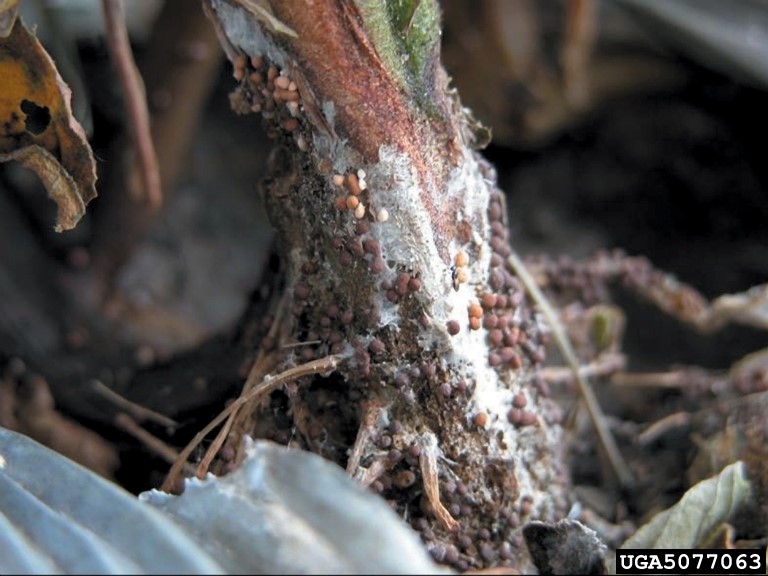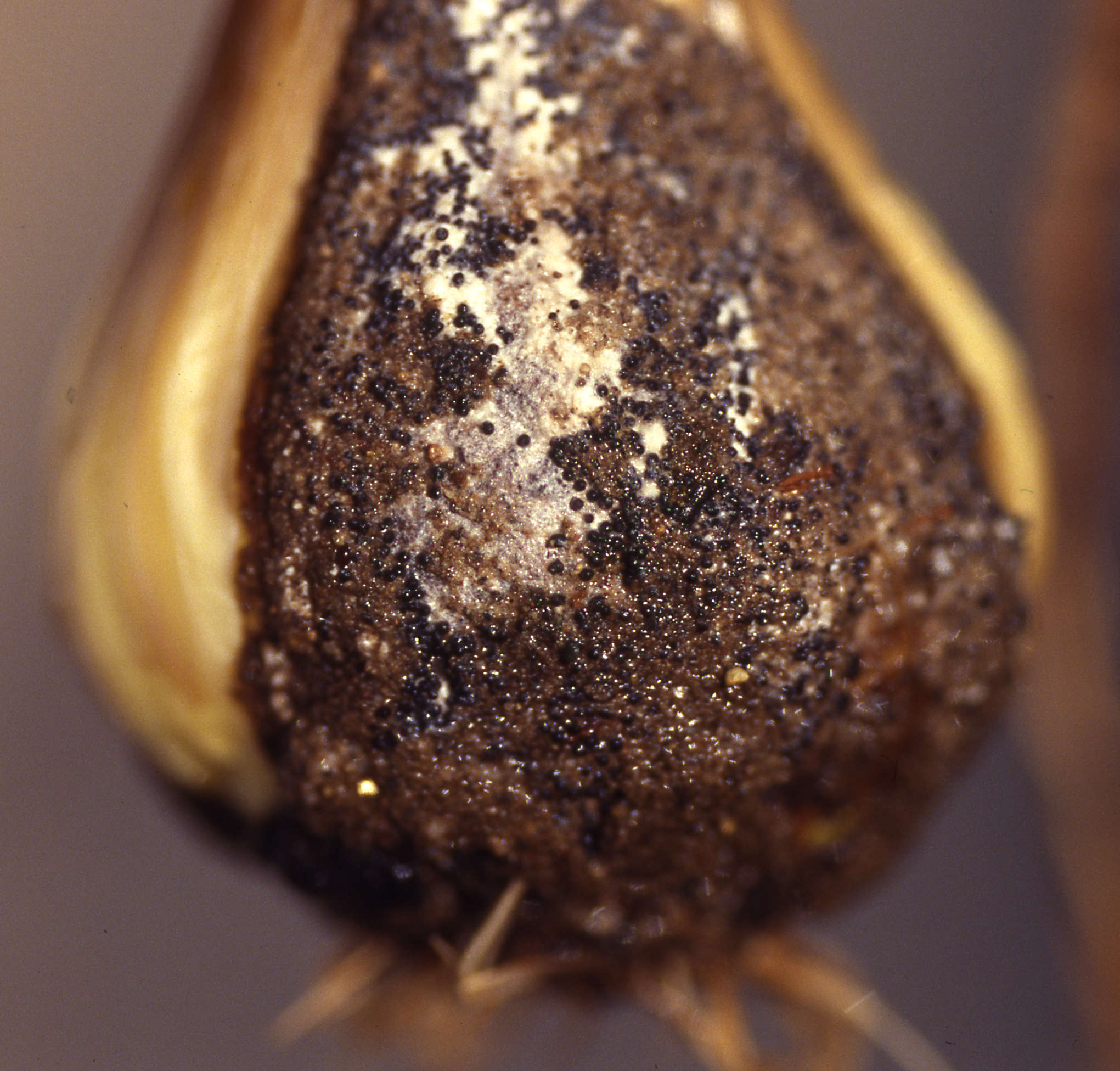
White Rot
Sclerotium Cepivorum
Pathogène :
Fungus
Type:
Risque:
INTERMEDIATE
Moho blanco


QUI EN EST LA CAUSE ?
Sclerotium cepivorum is a pathogen that causes a devastating disease in onion plants and other related species. This fungus is known for its ability to survive for long periods in the soil in the form of sclerotia, which are resistance structures. When conditions are favorable, these sclerotia germinate and produce fungal structures called mycelium, which infect the roots of the host plants.
SYMPTÔMES
Sclerotium cepivorum is a pathogen that causes a devastating disease in onion plants and other related species. This fungus is known for its ability to survive for long periods in the soil in the form of sclerotia, which are resistance structures. When conditions are favorable, these sclerotia germinate and produce fungal structures called mycelium, which infect the roots of the host plants.
The disease it causes in onions is known as "white neck rot" or "white root rot." Symptoms include decay of the neck and base of the plant, leading to sudden collapse and death of the plant. A characteristic white mold is often seen on infected areas. This disease can cause significant losses in onion crops and is especially problematic in regions with hot, humid climates.

TEMPÉRATURE ET HUMIDITÉ
20 ºC - 30°C
70% - 90%
VOIES DE TRANSMISSION
Contaminated soil, infected crop remains, contaminated agricultural tools, contaminated irrigation water, vegetative propagation.
Do you want to remove this pest? Choose how you want to treat it.
TRAITEMENTS
Traitements chimiques
• PIRACLOSTROBIN 6.7% + BOSCALIDE 26.7% (I) [WG] P/P
• PHENHEXAMIDE 50% [SC] P/V
Traitements autorisés en agriculture biologique
-
Traitements biologiques
-
Recommandations
To prevent and control white rot, it is essential to implement integrated pest management practices. This includes crop rotation, selection of resistant varieties, weed control, improvement of soil structure and avoidance of overwatering. In addition, the use of specific fungicides can be effective in controlling the disease, although they must be applied preventively and following the dosage recommendations to avoid pathogen resistance.
Enlace patrocinado
Enlace patrocinado
Enlace patrocinado
Enlace patrocinado
Enlace patrocinado
Enlace patrocinado
Effective against all types of fungi
TRAITEMENTS
Remèdes maison
There are no home treatments
Alliés naturels
Traitements chimiques
There are no treatments for this disease. Treatments are directed at the insect vectors that transmit it. See insect treatments.
RECOMMANDATIONS
- Check the back of the leaves frequently, especially in dry weather.
- Spray water on the leaves to increase humidity and prevent them from settling.
- Keep plants healthy with good watering and adequate light.
- If you see cobwebs or damage, clean the leaves with a damp cloth or pressurized water.
- Use potassium soap or neem oil every few days until they disappear.
Plantes répulsives
Rosemary, Dill, Coriander
PRODUITS RECOMMANDÉS
Enlace patrocinado
Enlace patrocinado
Enlace patrocinado
Enlace patrocinado
Enlace patrocinado
Enlace patrocinado
Effective against all types of fungi
*Les traitements recommandés sont des recommandations basées sur les bases de données des autorités et ne remplacent en aucun cas les lignes directrices établies par la législation de chaque pays.
*Les produits présentés sont des recommandations et ne sont pas nos propres produits. En tant qu'associés Amazon, nous gagnons des revenus grâce aux achats de produits recommandés.






















